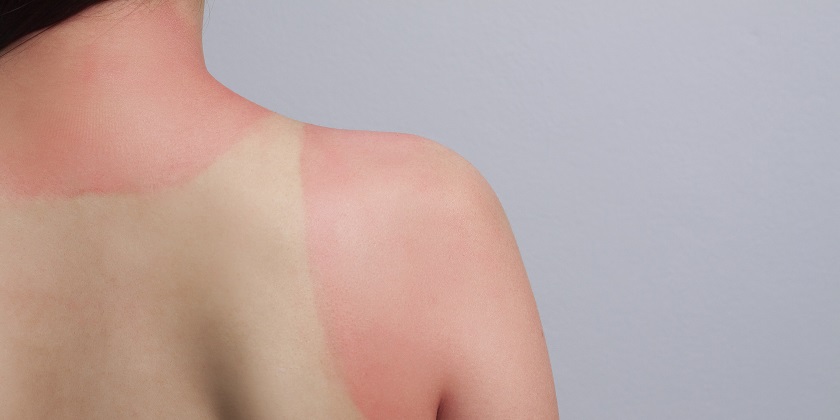- Home
- Sun Burn Treatment

Overview
Sunburn — red, painful skin that feels hot to the touch — usually appears within a few hours after too much exposure to ultraviolet (UV) light from sunshine or artificial sources, such as sunlamps.
Intense, repeated sun exposure that results in sunburn increases your risk of other skin damage and certain diseases. These include dry or wrinkled skin, dark spots, rough spots, and skin cancers, such as melanoma. You can usually find sunburn relief with simply home remedies. Sunburn may take several days or longer to fade.
You can prevent sunburn and related conditions by protecting your skin. This is especially important when you're outdoors, even on cool or cloudy days.
Symptoms
Sunburn signs and symptoms include:
- Pinkness or redness
- Skin that feels warm or hot to the touch
- Pain, tenderness and itching
- Swelling
- Small fluid-filled blisters, which may break
- Headache, fever, nausea and fatigue if the sunburn is severe
Any exposed part of your body — including your earlobes, scalp and lips — can burn. Even covered areas can burn if, for example, your clothing has a loose weave that allows ultraviolet (UV) light through. Your eyes, which are extremely sensitive to the sun's UV light, also can burn. Sunburned eyes may feel painful or gritty.
Signs and symptoms of sunburn usually appear within a few hours after sun exposure. But it may take a day or longer to know the full extent of your sunburn.
Within a few days, your body may start to heal itself by "peeling" the top layer of damaged skin. After peeling, your skin may temporarily have an irregular color and pattern. A bad sunburn may take several days or longer to heal.
Causes:
Sunburns are caused by exposure to too much ultraviolet (UV) light. UV radiation is a wavelength of sunlight in a range too short for the human eye to see. Ultraviolet A (UVA) is the type of solar radiation most associated with skin aging (photoaging). Ultraviolet B (UVB) is associated with sunburn. Exposure to both types of radiation is associated with developing skin cancer. Sunlamps and tanning beds also produce UV light and can cause sunburn.
Melanin is the dark pigment in the outer layer of skin (epidermis) that gives your skin its normal color. When you're exposed to UV light, your body protects itself by accelerating the production of melanin. The extra melanin creates the darker color of a tan.
A suntan is your body's way of blocking the UV rays to prevent sunburn and other skin damage. But the protection only goes so far. The amount of melanin you produce is determined genetically. Many people simply don't produce enough melanin to protect the skin well. Eventually, UV light causes the skin to burn, bringing pain, redness and swelling.
You can get sunburn on cool, hazy or cloudy days. As much as 80 percent of UV rays pass through clouds. Snow, sand, water and other surfaces can reflect UV rays, burning your skin as severely as direct sunlight.
Risk factors
Risk factors for sunburn include:
- Having light skin, blue eyes, and red or blond hair
- Living or vacationing somewhere sunny, warm or at high altitude
- Working outdoors
- Mixing outdoor recreation and drinking alcohol
- Having a history of sunburn
- Regularly exposing unprotected skin to UV light from sunlight or artificial sources, such as tanning beds
- Taking a drug that makes you more likely to burn (photosensitizing medications)

